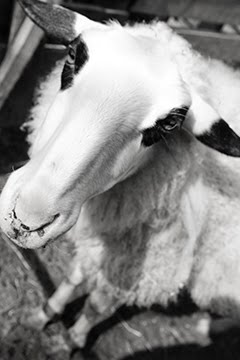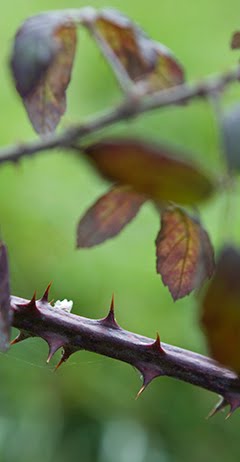Now, what happens to the ducks once they are whisked
away from the Marché au Gras madness and into the kitchen?
away from the Marché au Gras madness and into the kitchen?
They become meals and dishes of various kinds, textures, qualities-
a main course, a pâte, a spread, you name it. But first, before we make anything,
we have to learn the correct way to cut a duck.
a main course, a pâte, a spread, you name it. But first, before we make anything,
we have to learn the correct way to cut a duck.
 Our gracious instructor Kate, giving the duck some good lovin'.
Our gracious instructor Kate, giving the duck some good lovin'.It is always a good idea to do this, soften it up a bit, before you start hacking away.
 All of the body parts are still here, so we have to take out what is uneatable.
All of the body parts are still here, so we have to take out what is uneatable.The first to go are the head and neck. At the base of the neck is the crop, a pouch where the ducks store food to eat later, so the kernels of corn are still very much in tact.
Contrary to popular belief about the evils of fois gras, the crop is where food gets stuffed
into the duck, not directly into the stomach.
So they have more food available to them, but they choose when they eat it.
 With the neck and head finished, next comes the main cut down the back of the duck,
With the neck and head finished, next comes the main cut down the back of the duck,in hopes of finding the large, precious liver.
 As seen from the rear of the duck...
As seen from the rear of the duck...this liver is an absolute beauty, both in color and size.
Slowly and carefully you peel the skin away from around the liver.
 "Now, how do you get the damn thing out?" is the question on Sandra's mind.
"Now, how do you get the damn thing out?" is the question on Sandra's mind.A little bit more digging and there you are, just like that.
 And how much does your liver weigh? Probably somewhere around the human average
And how much does your liver weigh? Probably somewhere around the human averageof 2 kilos. This duck's liver was almost 1 kilo(almost 2 pounds)...
not bad for a bird not even close to 1/2 our size.
 Now for the really fun part, you get to fish out the innards,
Now for the really fun part, you get to fish out the innards,leaving the duck feeling... a bit empty inside.
 There is already a nice cut down the back, which we made before.
There is already a nice cut down the back, which we made before.Following that line, you puuuulll the first side off very carefully, using the knife to help
sever any tissue hanging on for dear life. Continue all the way down...
 Voila! Well done! One whole side of the duck, cleanly separated from the body.
Voila! Well done! One whole side of the duck, cleanly separated from the body.Now, cut each part out- leg, wing, and breast(magret)- from the skin.
And start in on side numéro deux.
 The whole duck on the left turned into all the separate cuts on the right in a matter of minutes...well, not as fast as the chefs at the marché, but we got there eventually.
The whole duck on the left turned into all the separate cuts on the right in a matter of minutes...well, not as fast as the chefs at the marché, but we got there eventually.So, who thinks they can now dissect a duck all on their own? Anyone?
It's a little daunting at first, but the reward of eating it later is 100% worth the effort.
Cheers


 Back in Kate's
Back in Kate's 



































































































